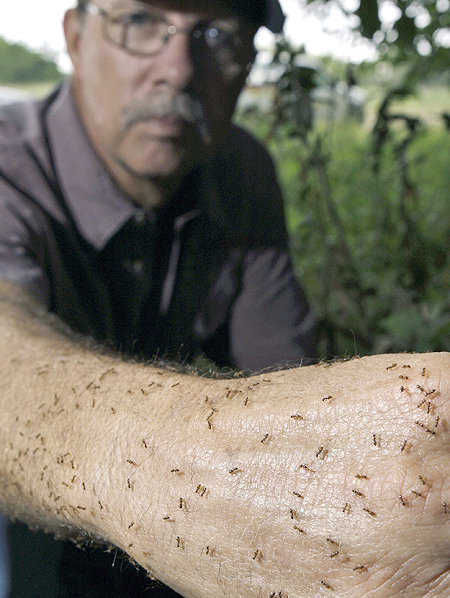
Crazy ants, so named because they move in all directions rather than in a straight line, first surfaced in Houston seven years ago and had previously been confirmed in 14 Southeast Texas counties as far north as Huntsville.
But now the ants have been seen beyond the Houston area, with confirmed sightings in San Antonio and in Jim Hogg County in the Rio Grande Valley.
This discovery is viewed as "a significant change" by researchers who have long feared that the ants would move to other parts of the state, said Rob Plowes, a research associate with the University of Texas at Austin Fire Ant Research Center who visited San Antonio last week.
What concerns scientists is that crazy ants established a presence in San Antonio despite a prolonged drought. The colony was located near a strip shopping center, a hotel and a drainage canal, which provided enough moisture for the ants to survive.
The best guess is that the crazy ants spread through nursery plants or perhaps hay bales.
To date, the ants have been a headache primarily for Houston-area homeowners who have seen the insects take over their homes and their yards.
"They can so overwhelm a yard that your dog won't even want to go outside to pee," said Texas Parks and Wildlife entomologist Mike Quinn. "If a pet or even a person steps outside, they can be covered in ants within a minute."
Widespread impact
The effects on agriculture could be even greater, said Pearland exterminator Tom Rasberry, who first identified the crazy ants in Texas and has seen infested areas that are now devoid of wildlife.
"From an ecological standpoint, when you go out into rural areas where there's an infestation, there's an eerie silence - there's a lack of insects and grasshoppers, a lack of songbirds," said Rasberry, who is worried about the impacts on the beekeeping industry.
There are also concerns for other businesses.
"You've got other situations just in the last couple of weeks where these ants shorted out computers and control valves on pipelines that cost one company a million dollars for just one incident," Rasberry said.
The ants are similar to ones in Florida, where they are known as Caribbean crazy ants.
But the Texas crazy ants have been far more destructive, leading Rasberry and others to question whether they are the same species. Rasberry said the Texas ants have proved so resilient and adaptive that they might survive the harsher North Texas winters.
"I think we need research to know what makes these guys tick," Rasberry said. "I think they'll make it past Dallas-Fort Worth myself, but what kind of numbers will they produce I really don't know because nobody is paying for any research."
Rasberry crazy ants
Plowes agrees that it would take about $100,000 to properly identify the species and learn possible ways to combat it. But an ant task force has produced only some pamphlets.
Rasberry, who has seen the Texas strain nicknamed Rasberry crazy ants since he discovered it, isn't sure whether he wants his name associated with the critters.
"Do you really want something named after you that could be one of the hardest-hitting insects ever to hit the Gulf Coast region?" he said. "Because that's what I believe is going to happen."



Reader Comments
to our Newsletter